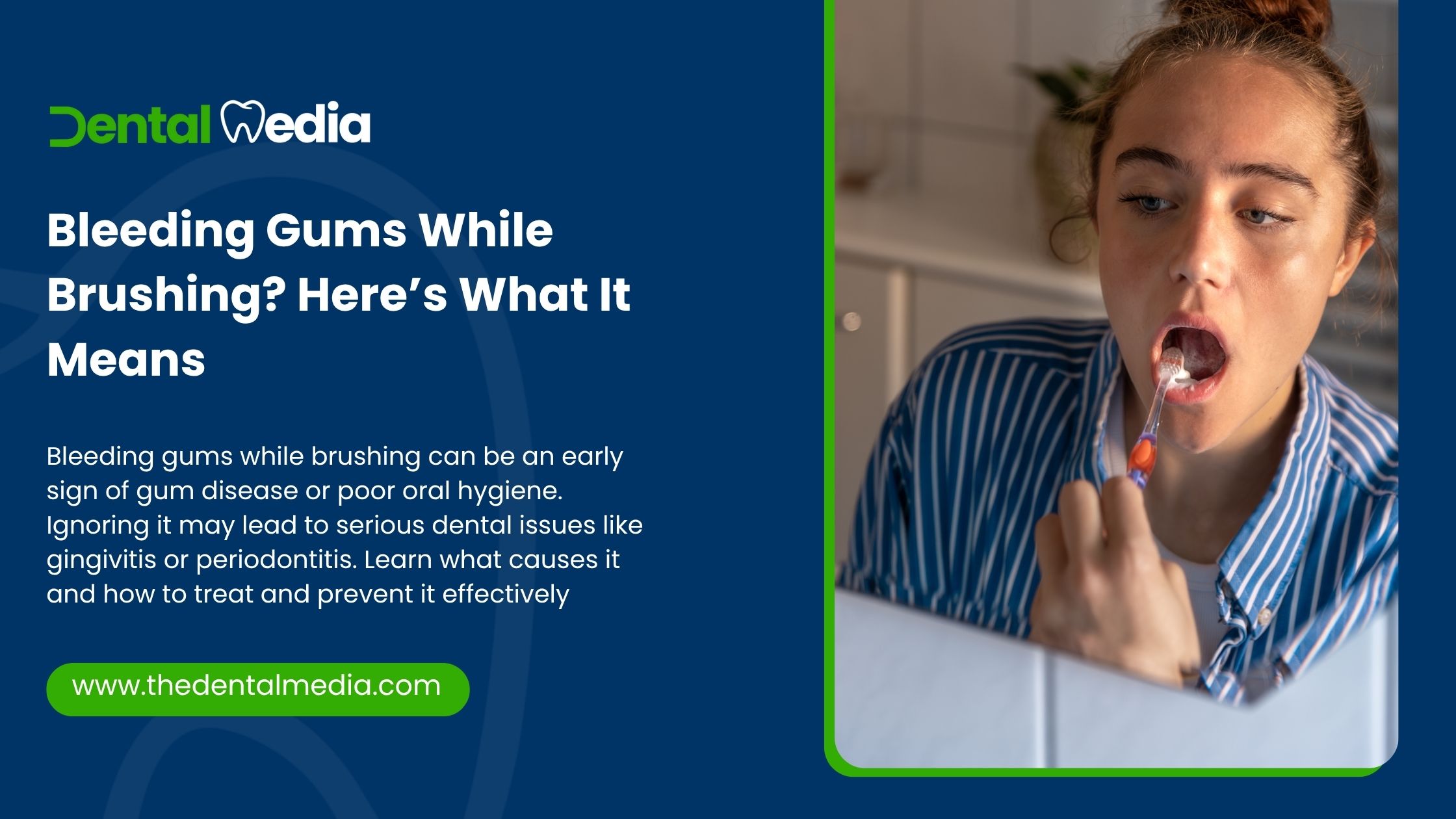If you’ve ever noticed blood in the sink after brushing or flossing your teeth, you’re not alone. While many people dismiss it as a minor issue, bleeding gums are often an early warning sign of underlying oral health problems. Ignoring it can lead to more serious conditions — not just in your mouth, but in your overall health as well.
In this article, we’ll explore the causes, risks, and solutions for bleeding gums and help you understand when it’s time to seek professional help.
What Causes Gums to Bleed?
1. Gingivitis — The Early Stage of Gum Disease
Gingivitis is the most common cause of bleeding gums. It occurs when plaque — a sticky film of bacteria — builds up along the gum line, causing inflammation. Symptoms include red, swollen, and tender gums that bleed easily during brushing or flossing.
2. Poor Oral Hygiene
Not brushing and flossing regularly allows bacteria to thrive. Inconsistent or improper brushing techniques can also contribute to gum irritation and bleeding.
3. Hard or Aggressive Brushing
Using a hard-bristled toothbrush or brushing too forcefully can injure the delicate gum tissue, leading to bleeding and long-term recession of gums.
4. Vitamin Deficiencies
Lack of Vitamin C or Vitamin K can lead to gum issues. Vitamin C helps repair tissue and heal wounds, while Vitamin K supports blood clotting.
5. Hormonal Changes
Pregnancy, menstruation, and menopause can cause hormonal fluctuations that increase gum sensitivity and bleeding — a condition known as pregnancy gingivitis.
6. Certain Medications
Blood thinners, aspirin, and some high blood pressure medications can increase the likelihood of bleeding gums.
7. Smoking and Tobacco Use
Smoking weakens the immune system, reduces blood flow to the gums, and makes it harder for gum tissue to heal.
Why You Shouldn’t Ignore Bleeding Gums
Many people think bleeding gums are normal — but they’re not. They could be the first sign of a much bigger problem. Here’s what ignoring the issue could lead to:
- Periodontal disease — a chronic gum infection that can lead to tooth loss
- Bad breath and receding gums
- Bone loss around the teeth
- Links to heart disease, diabetes, and stroke due to systemic inflammation
How to Prevent and Treat Bleeding Gums
1. Improve Your Oral Hygiene
- Brush twice a day using a soft-bristled toothbrush
- Use gentle circular motions rather than aggressive back-and-forth strokes
- Don’t forget to floss daily — it removes plaque and food particles between teeth
2. Switch to an Antibacterial Mouthwash
Using a mouthwash that targets bacteria can help reduce plaque and inflammation.
3. Visit Your Dentist Regularly
Routine dental check-ups and professional cleanings help catch problems early. Your dentist can also guide you on proper brushing techniques.
4. Eat a Balanced Diet
Include foods rich in Vitamin C, Vitamin K, and calcium to support gum health. Limit sugary snacks and drinks that contribute to plaque buildup.
5. Stay Hydrated
Drinking water helps flush away bacteria and food particles from your mouth, reducing gum irritation.
6. Quit Smoking
Tobacco use significantly increases the risk of gum disease. Quitting can drastically improve your oral health.
When to See a Dentist
You should see a dentist immediately if:
- Your gums bleed regularly
- You have persistent bad breath or a bad taste in your mouth
- Your teeth feel loose
- Your gums are pulling away from your teeth
Early intervention can prevent long-term damage and even save your teeth.
Have questions about your gum health? Contact us today at TheDentalMedia.com — your smile deserves expert care!

